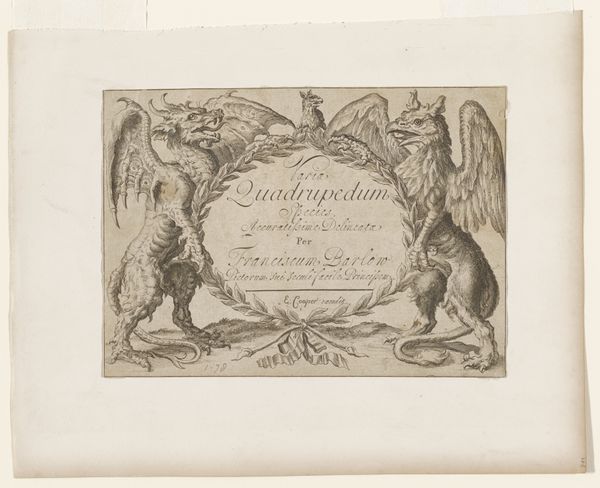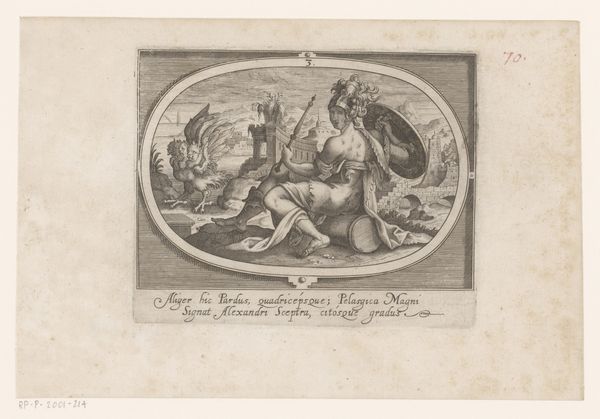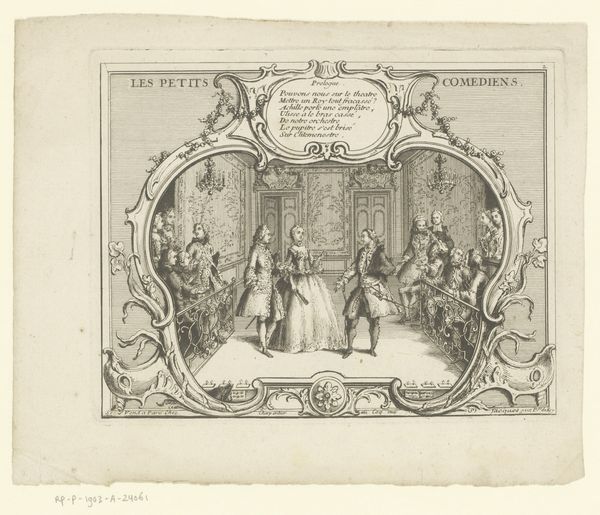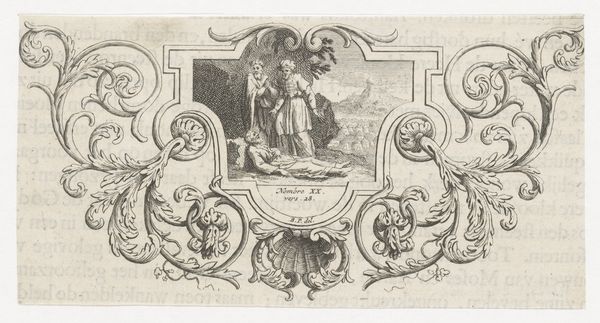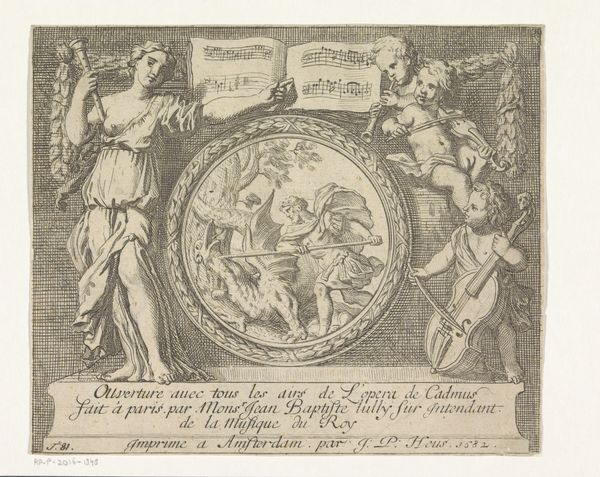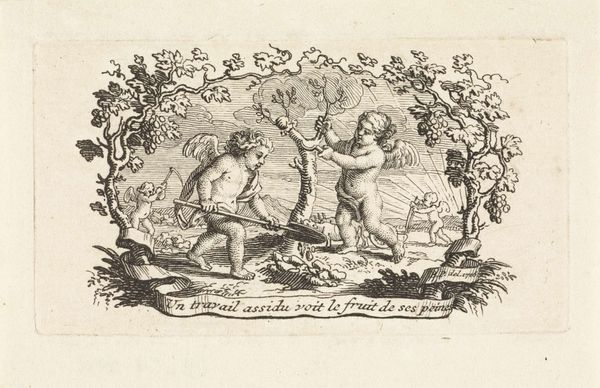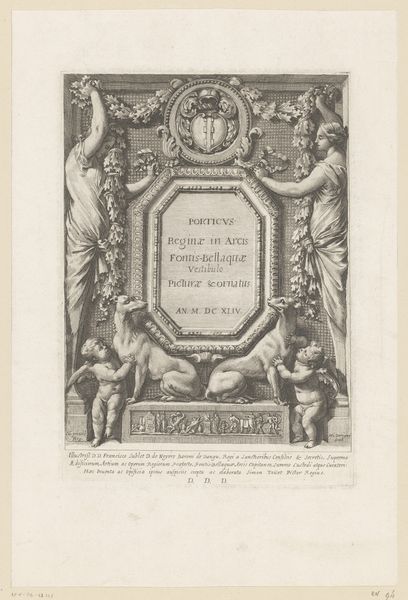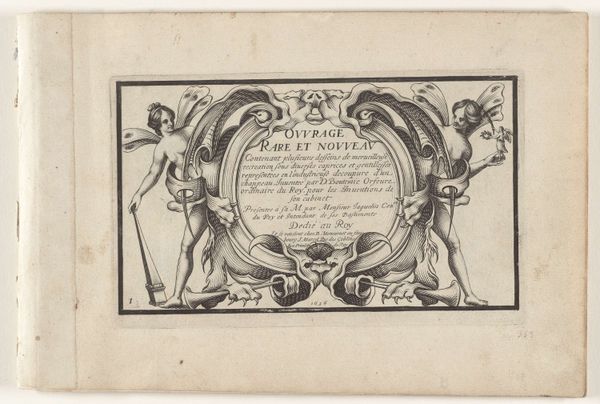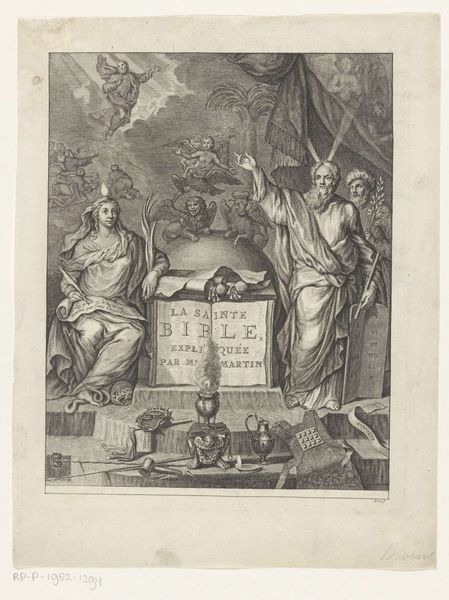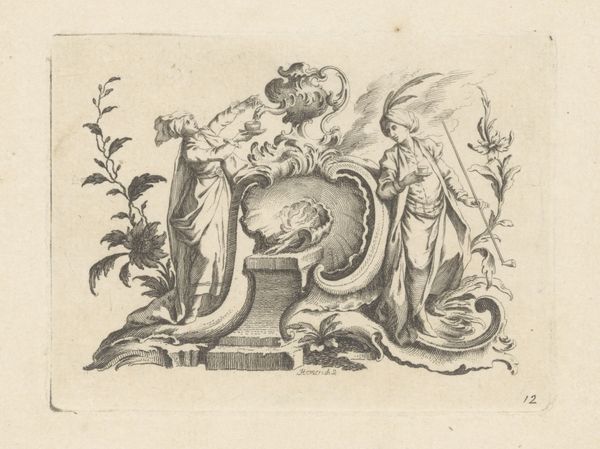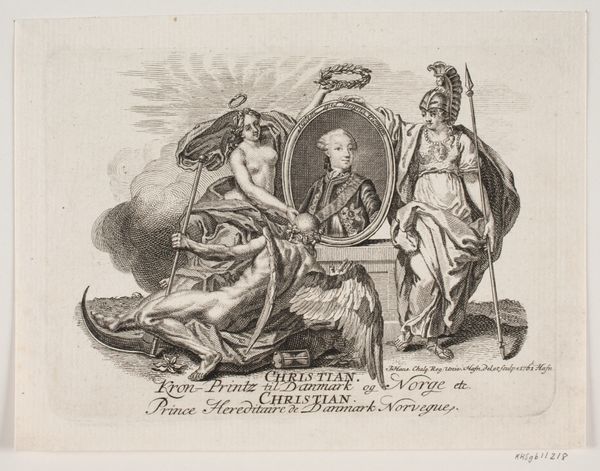
Dimensions: height 136 mm, width 248 mm
Copyright: Rijks Museum: Open Domain
Curator: Here we have Gilles Rousselet's "Titelprent met twee engelen en draperie," made in 1650. The medium is engraving, so we can delve into the fascinating labor of printmaking at that time. Editor: This Baroque print, with its two angels holding up a banner, seems very stately, even regal. What strikes you most about this engraving? Curator: Well, considering the laborious process of engraving - the physical act of carving into a metal plate, the application of ink, the pressure required for each print - it’s interesting to consider the consumption this imagery encouraged. It’s allegorical; two angels flank a heavy draped banner of text that seems to announce a set of churches in Rome. Look closely; who would have commissioned this print, and for what purpose? What does this reveal about the social conditions that supported art production? Editor: It’s interesting you bring up the laborious printing process. The texture from the lines gives a rich feel, and it really highlights the engraver's skill. But also it speaks to mass production. It could spread ideology and visibility for specific groups. Curator: Exactly! Each impression would have represented many hours of meticulous work. How did its production affect the understanding or appreciation of the religious subject matter? Would its relatively "mass produced" state take away some of the art’s unique value, do you think? Editor: Possibly, though its availability might have widened appreciation of both art and faith at the same time, no? I’d also not considered how the commercial aspect may intersect with art in that time, the role of Rousselet and other producers in shaping perception. Curator: Right, it’s not just about aesthetics; it’s also about how art serves different social functions. Editor: It gives you a newfound appreciation for engravings. It’s so much more than a pretty picture, it’s the final result of social labor, material knowledge, cultural and spiritual contexts that shaped both the artist and audiences of that era. Curator: Precisely. Analyzing the material production offers tangible connection to the lives and labor behind artwork.
Comments
No comments
Be the first to comment and join the conversation on the ultimate creative platform.
